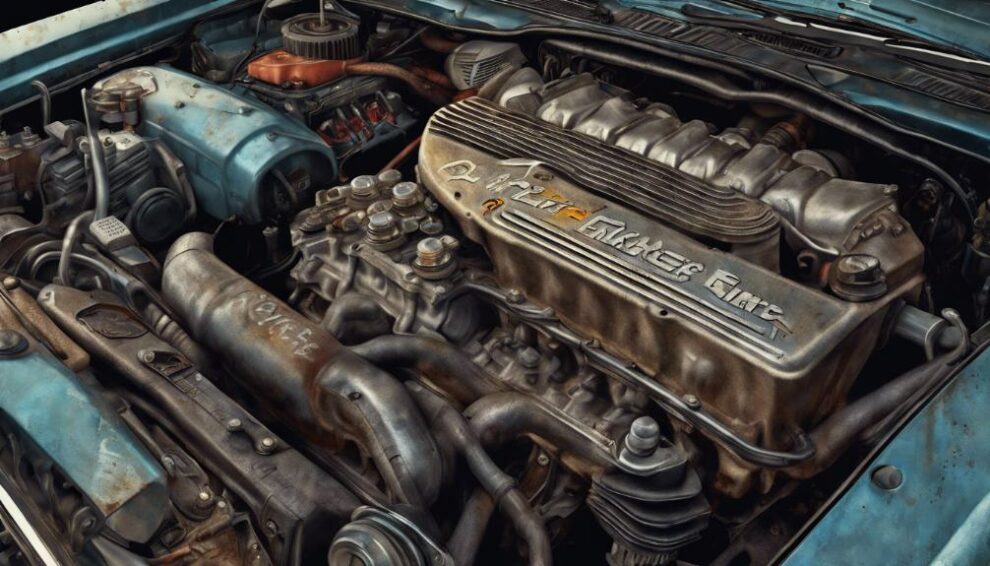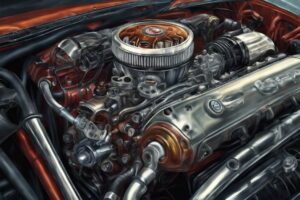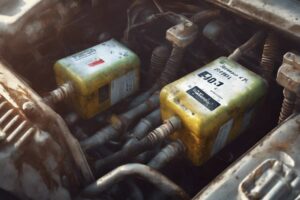If you hear clicking or ticking noises from your engine, it might be bad rocker arms. Look out for decreased power and acceleration as well.
Visual inspection can reveal wear and tear, while the check engine light may indicate problems. Stalling and poor acceleration are critical engines issues to watch for, along with clicking noises.
Recognize these signs early to prevent further damage. Hearing sewing machine-like clicking noises or valves struggling to function are indicative of rocker arm problems.
Regular maintenance, lubrication, and following service intervals are key. For successful replacement, change all rocker arms together and adjust them properly. Double-check installation techniques if needed.
Understanding these symptoms and tips is essential for optimal engine performance.
Key Points
- Listen for clicking or ticking noises from the engine, a common symptom of bad rocker arms.
- Look out for decreased power and acceleration, indicating potential rocker arm issues.
- Regularly inspect rocker arms for wear and tear during maintenance to prevent problems.
- When replacing rocker arms, do so together, adjust near operating temperature, and address installation issues promptly.
- Respond promptly to check engine light warnings, as they may signal rocker arm problems needing attention.
Common Symptoms of Bad Rocker Arms
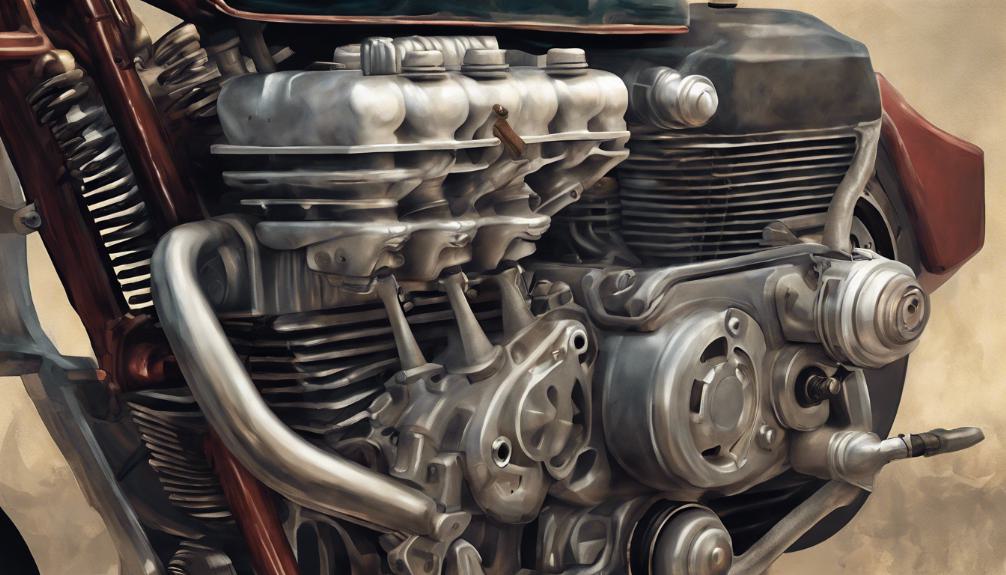
If you hear clicking or ticking noises coming from your engine, you may be experiencing a common symptom of bad rocker arms. These vital components play a significant role in your engine’s operation.
Engine diagnostics are essential in identifying issues early. Preventative care is key to maintaining peak performance.
Poor engine performance, like decreased power and acceleration, can indicate rocker arm problems. Visual inspection is essential; look for wear and tear on rocker arms, such as cracks or damage.
Then, if the check engine light illuminates, it could be signaling rocker arm issues needing attention.
Prompt replacement of rocker arms is necessary to prevent further damage and maintain engine efficiency. By addressing these symptoms early on, you can prevent more severe engine issues.
Stay proactive with your engine maintenance to ensure smooth operation and longevity.
Engine Performance Issues to Watch For
Keep an eye out for engine performance issues indicating potential problems with your rocker arms.
If you notice decreased power, poor acceleration, engine stalling, or even the risk of complete engine failure, it could be linked to faulty rocker arms.
These issues can manifest due to wear and tear on the rocker arms affecting valve operation. Clicking noises resembling a sewing machine may also be present, signaling the need for inspection and potential replacement.
To address these concerns, perform engine diagnostics and troubleshooting to pinpoint the root cause. Visual inspections are essential to identify cracks, warping, or damage in the rocker arms impacting engine performance.
Furthermore, if your check engine light illuminates with codes related to rocker arm problems, prompt action is essential.
Timely replacement of rocker arms is necessary to prevent further engine damage and maintain peak performance.
Consider seeking performance upgrades or modifications to enhance your engine’s efficiency and longevity.
Recognizing Noises Indicative of Rocker Arm Problems
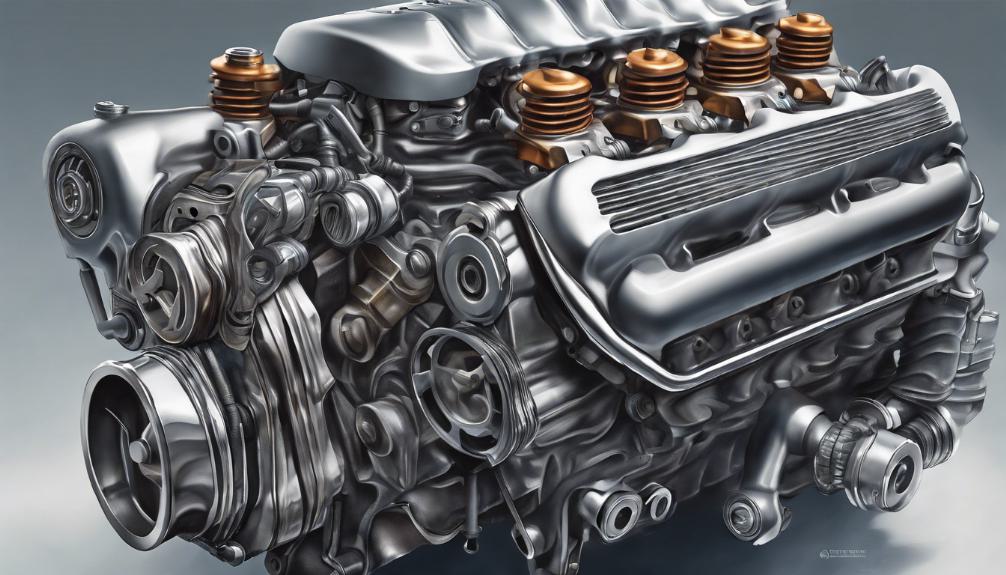
When identifying rocker arm problems, listen for clicking noises resembling a sewing machine during engine operation.
These sounds, similar to a tick or click, are key indicators of potential rocker arm issues.
Valves struggling to open or close may also point to rocker arm malfunctions. To identify these sounds, it’s important to pay close attention during engine operation and listen for any unusual noises that could signify rocker arm problems.
Diagnostic methods involve troubleshooting these noises to pinpoint the specific causes of rocker arm malfunctions.
Clicking or ticking sounds are common symptoms associated with rocker arm damage, making it essential to address any unusual noises promptly.
How Can a Clogged Muffler Affect Engine Rocker Arm Function and What Can be Done About it?
Clogged muffler symptoms solutions can have a direct impact on engine rocker arm function. A clogged muffler can cause excessive backpressure, affecting the engine’s performance and causing premature wear on rocker arms. To address this issue, regular inspection and maintenance of the muffler and exhaust system is essential.
Importance of Regular Rocker Arm Maintenance
Regular maintenance of your rocker arms is essential for guaranteeing the best performance and longevity of your engine.
By taking preventative measures such as inspecting rocker arms during tune-ups and maintaining proper lubrication, you can prevent engine misfires and ticking noises that may result from neglected rocker arm care.
Proper maintenance not only guarantees excellent engine performance but also extends the lifespan of your rocker arms.
Following the manufacturer’s recommended service intervals for maintenance is critical in identifying early signs of damage and preventing premature wear and tear on these important engine components.
Investing time in regular rocker arm maintenance won’t only keep your engine running smoothly but also provide longevity benefits by avoiding costly repairs and ensuring efficient operation.
Make it a priority to include rocker arm maintenance in your regular engine care routine to safeguard the performance and durability of your engine.
Tips for Successful Rocker Arm Replacement
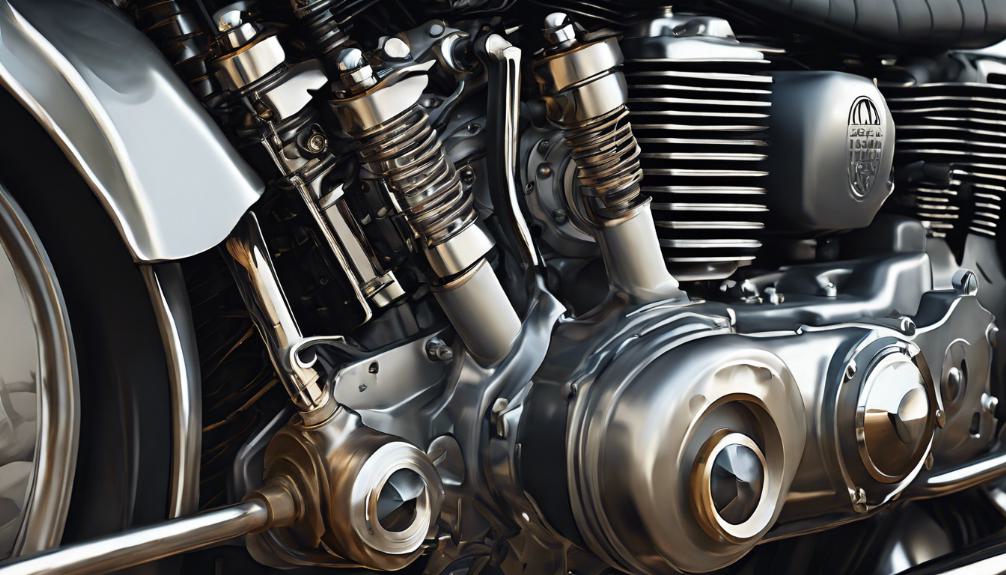
For successful replacement of rocker arms, it’s important to consider replacing all rocker arms together along with the pushrods to guarantee peak performance and longevity.
When installing new rocker arms, make sure they’re adjusted when the engine is near operating temperature to prevent potential issues.
It’s advisable to replace one rocker arm at a time to minimize oil leakage and uphold engine integrity during the process.
Remember that rocker arms don’t require a break-in time, but it’s essential to make correct adjustments for smooth operation.
Troubleshooting tips suggest that if you encounter any unusual noises or performance issues after replacement, double-check the installation techniques and readjust as necessary.
As an Amazon Associate we earn from qualifying purchases.







